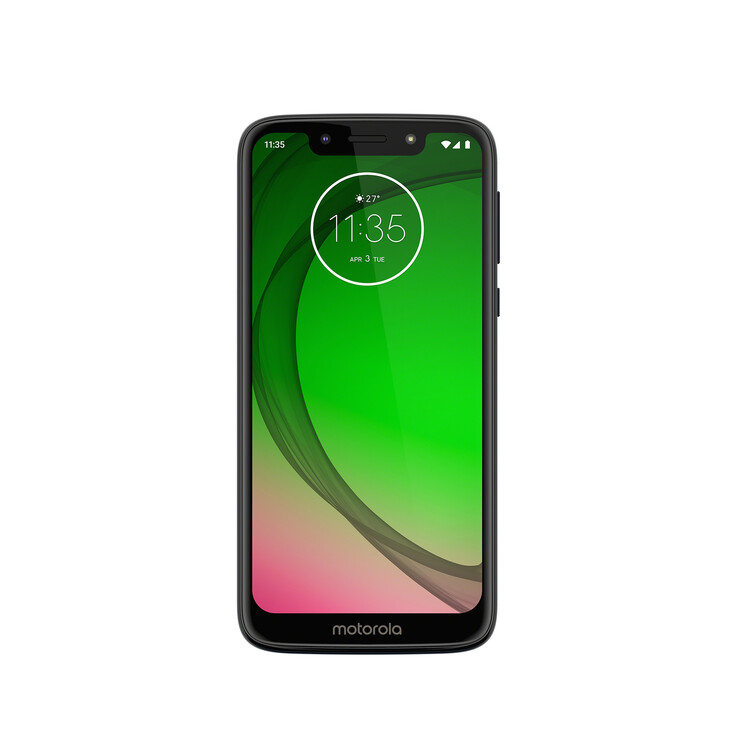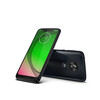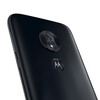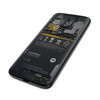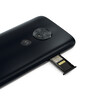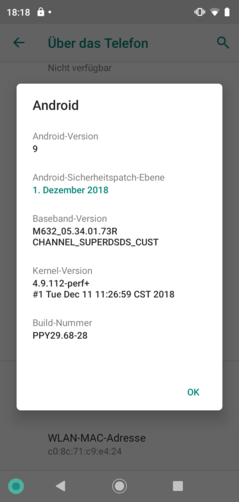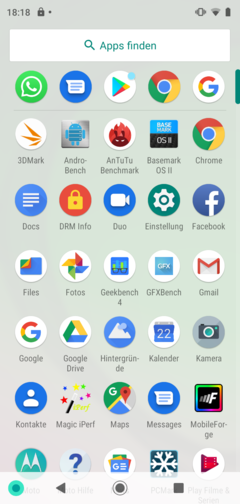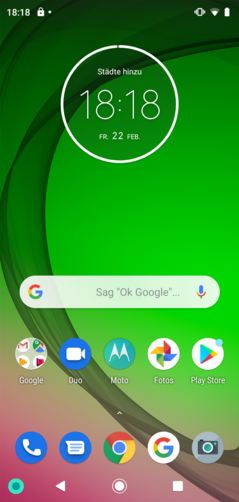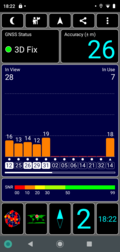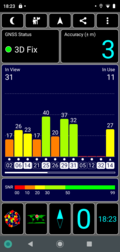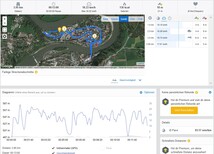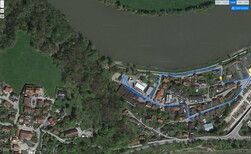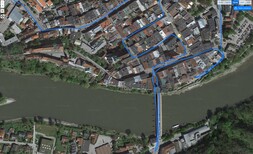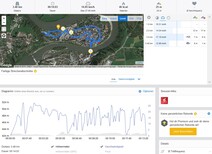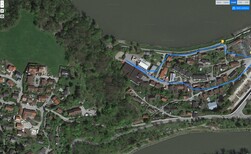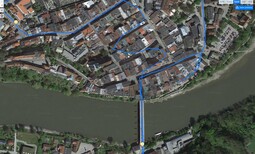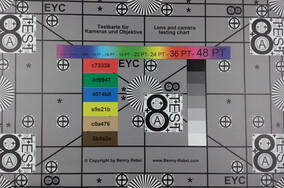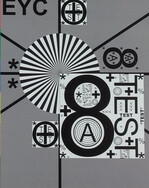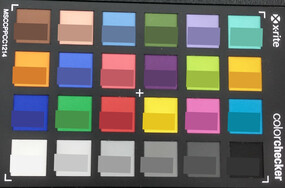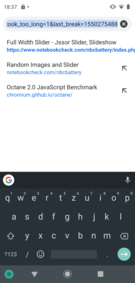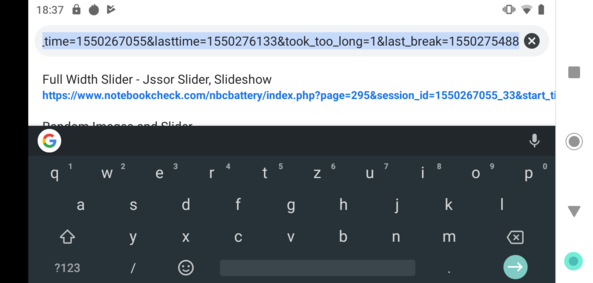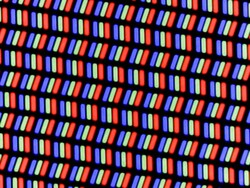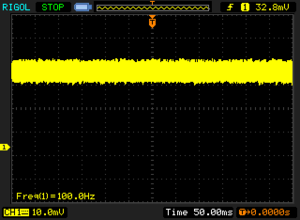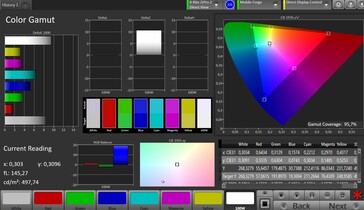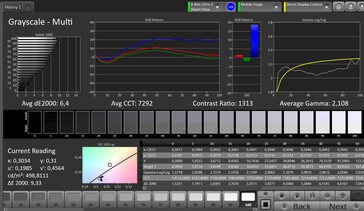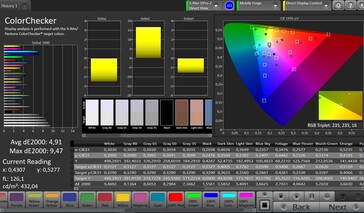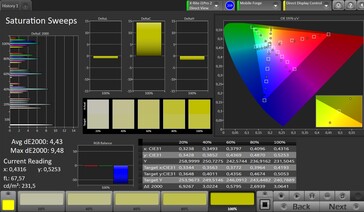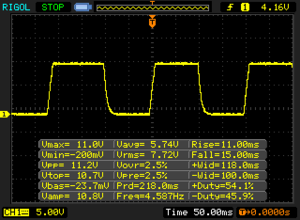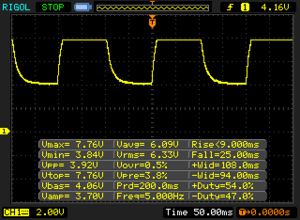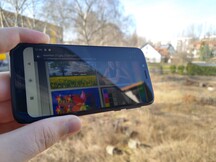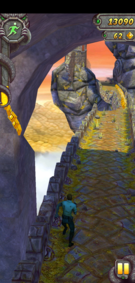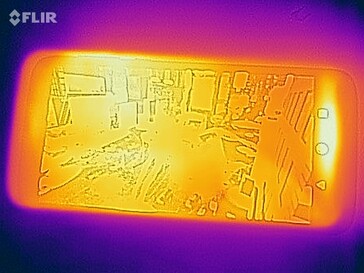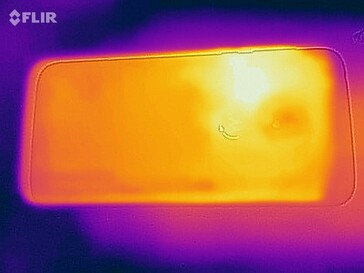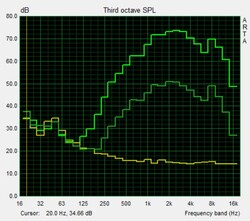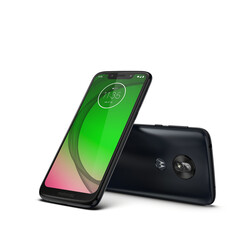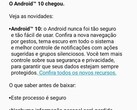Motorola Moto G7 Play Smartphone Review
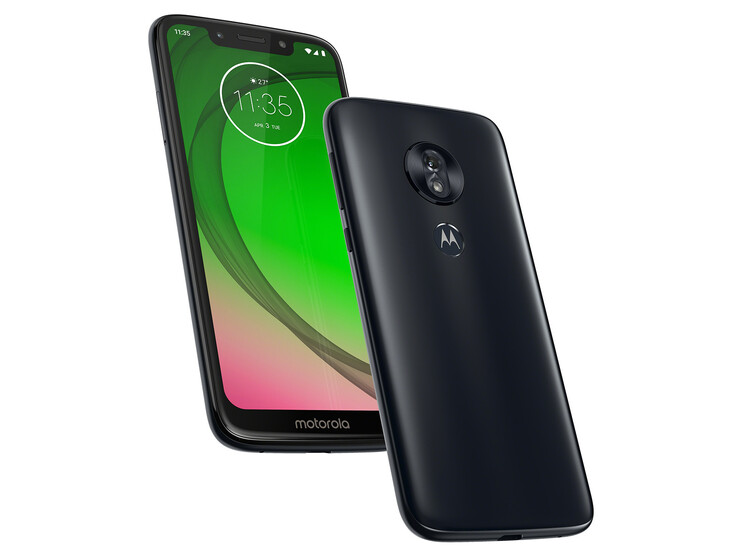
The Motorola G series is known for being excellent value for money, which the Moto G7 and Moto G7 Plus underlined in our recent reviews. What about the cheapest 7th generation model, the Moto G7 Play though? Motorola promises that the device will be 60% more powerful than its predecessor, while having a bright Max Vision display, decent cameras and a long lasting battery with fast charging support.
The above sounds promising for just €150 (~$170), but the G7 Play has strong competition from other budget smartphones. We have chosen to compare our review unit against the HTC Desire 12, the Motorola Moto G6 Play, the Nokia 5.1, and the Wiko View 2 Plus.
Case
The first compromise that we noticed Motorola had made is its choice of materials. The G7 Play has a plastic back compared to the more stylish glass backs with which Motorola equipped the Moto G7, the G7 Plus and the G7 Power. The use of plastic is not necessarily a bad thing though, as it is lighter and less brittle than glass. It is easier to scratch though. The back cover has a swirling ribbed texture that adds grip and makes the device less susceptible to fingerprints and other dirt.
The G7 Play has rounded edges like its G7 siblings but feels better in hand in our opinion because it is smaller and lighter. Our review unit also has a smaller footprint than most of our comparison devices, although the HTC Desire 12 is around 12 g (~0.4 oz) lighter than the G7 Play. The latter is also a hair thinner than the Desire 12 and the Nokia 5.1 at 7.99 mm (~0.31 in). What is more, our review unit does not look cheap, as the gaps between materials are even and tight, while its narrow screen bezels give the device a comparatively high screen-to-body ratio. The G7 Play does have a large notch though, which may put off some people.
Motorola has covered the touchscreen in 2.5D glass, which gives the effect of the display seamlessly contouring into the back case. The company has equipped the G7 Play with a circular rear-facing camera housing too, but it is slightly smaller and protrudes less than its G7 siblings. The classic Batwing Motorola logo sits below the rear-facing cameras, which is also the fingerprint reader.
The G7 Play is available in Deep Indigo, Fine Gold and Starry Black. The indigo version is a deep blue that looks almost black, while the gold variant has a bright, yellow gold finish.
Connectivity
The G7 Play has 32 GB of internal memory, which can be expanded with up to 512 GB with a microSD card. The device has a dedicated card reader, and two nano-SIM card slots, which provides better functionality than the Hybrid second SIM slot with which many manufacturers equip their smartphones.
Motorola has also equipped the G7 Play with a comparatively powerful SoC. While it is not as potent as the Qualcomm Snapdragon 636 in the G7 Plus, the Snapdragon 632 should deliver better performance than the SoCs in our comparison devices. We shall cover this in greater detail in our Performance section. Incidentally, Motorola also equips the more expensive Moto G7 with a Snapdragon 632, which underlines how good value for money the G7 Play is. The latter has 2 GB of RAM to the 4 GB in the Moto G7, but 2 GB of RAM should still be powerful enough for most tasks.
All our comparison devices have micro USB ports, as do many budget smartphones. However, Motorola has equipped the G7 Play with a USB 2.0 Type-C port, which is reversible and should allow the device to be charged faster than those with micro USB ports. The company has included a 3.5 mm headphone jack too, which is always welcome. There is no NFC though, which is a shame as it prevents people from using services such as Google Pay. Overall, the G7 Play is better equipped than our comparison devices and is on par with more expensive devices in this regard.
Software
The Moto G7 Play ships with Android 9 Pie, which is the latest version of Android at the time of writing. Motorola promises to deliver regular security patches and at least one system update to Android Q. Unfortunately, our review unit arrived with December 2018 security patches, which were a few months outdated at the time of our tests. Motorola claims to release new security patches every 2/3 months, so the G7 Play should soon see a new security patch update, according to the company’s update schedule.
The OS is the same almost stock Android experience that we liked during our Moto G7 and G7 Plus tests. In short, even Android newcomers should quickly acclimatise to using and navigating through the OS. The company continues to include Moto Actions, which integrates additional functions that are not present in stock Android. Moving the G7 Play down swiftly twice in a chopping motion enables the flashlight while twisting your wrist quickly twice turns on the default camera app. The G7 Play also has an always-on display (AOD) feature that allows you to preview the battery percentage, date, time, and notifications or missed calls. The AOD can be customised within the overhauled Moto app.
Communication & GPS
Motorola has made further compromises on the G7 Play compared to other G7 models with LTE and Wi-Fi connectivity. The G7 Play supports up to IEEE 802.11 n Wi-Fi, which means that it can only connect 2.4 GHz networks; 5 GHz networks are not supported. Likewise, the device supports LTE Cat.7 for downloads and Cat. 6 for uploads, which is slower than the LTE support in the G7 Plus but faster than what the Moto G7 manages, surprisingly. Equally, the G7 Play has limited LTE coverage and can only connect to LTE networks in Europe and a few other countries. Our review unit maintained decent network reception throughout our tests in Germany though.
Moreover, the G7 Play scored poorly in our iperf3 Client Wi-Fi tests. Our review unit finished dead last in our comparison tables and averaged just 11.6 MBit/s in our transmission Wi-Fi test. By contrast, the G7 Plus averaged 288 MBit/s in the same test, while the Moto G7 averaged 112 MBit/s. In short, it may be worth shelling out more for the Moto G7 or G7 Plus if you value Wi-Fi performance.
| Networking | |
| iperf3 transmit AX12 | |
| Nokia 5.1 | |
| HTC Desire 12 | |
| Wiko View 2 Plus | |
| Motorola Moto G6 Play | |
| Motorola Moto G7 Play | |
| iperf3 receive AX12 | |
| Nokia 5.1 | |
| HTC Desire 12 | |
| Wiko View 2 Plus | |
| Motorola Moto G6 Play | |
| Motorola Moto G7 Play | |
The G7 Play performed much better in our GPS tests though. Our test device found a satellite fix with up to 3 metres (~10 ft) accuracy outdoors, which dropped to 30 metres (~98 ft) when we went inside. The device also took around 30 seconds to find a sat fix inside compared to the two or three seconds that it took to locate us outdoors.
The device also performed well on our bike ride where we compared its location accuracy to a Garmin Edge 520, a professional navigation device. Our review unit deviated by 390 metres (~427 yd) compared to the route that the Garmin plotted and took a few extra shortcuts to keep up with us, but overall the G7 Play should be accurate enough for most general navigation tasks.
Telephone Features & Call Quality
Motorola pre-installs the Google suite of telephony apps just like it does with the Moto G7 and the G7 Plus. The app functions just as well as it does on other devices that we have tested.
Calls are intelligible at both ends, but they do not sound as clear as they do on other G7 devices. Likewise, the earpiece gets loud enough for making calls in most environments, but the microphone picks up too much background noise for our liking. Additionally, our review unit struggles to pick up our voice if we speak quietly. The other G7 devices that we have tested do a better job in this regard, so we suspect that Motorola has equipped the G7 Play with a cheaper microphone.
The speaker gets loud enough to make calls from a quiet environment, but our call partner’s voice sounded too thin for our liking. Again, we would recommend standing close to your device on hands-free; otherwise the microphone will struggle to pick out your voice.
Cameras
The G7 Play has an 8 MP front-facing camera and a 13 MP rear-facing sensor. There is no secondary rear-facing camera to help create depth of field shots as we saw with the G7 Plus. The device also has a rear-facing LED flash to help in low-light conditions, but do not expect miracles. Overall, the G7 Play has decent cameras for the money that take passable photos and videos.
Photos generally do not look that sharp, but our test shots look particularly blurry and washed in poor lighting conditions. Image noise also dominates pictures shot in low-light. Our review unit tries to compensate for its narrow aperture rear-facing camera by setting a longer exposure, but this only adds motion blur. In short, you will need a steady hand, or a tripod, to take passable pictures at night or in low light.
Likewise, the front-facing camera is good enough for taking the occasional selfie. However, it will overexpose bright areas in a scene to the point where they are blown out, as demonstrated by our selfie. Photos generally look sharp though.
Both cameras can record video in up to 1080p at 30 FPS. Unfortunately, neither camera has image stabilisation as the G7 Plus does, so panning shots are ruined by motion blur and jerky movements.
We also subjected our review unit to further camera tests under controlled lighting, which confirmed our initial impressions about the G7 Play’s camera. While photos generally look good, the lack of sharpness means that details are lost when you look closely. In short, we would not recommend making any large printouts of photos that you have taken with the G7 Play. The rear-facing camera reproduces colours surprisingly naturally, but almost all tones apart from dark grey are much brighter than ColorChecker Passport reference colours. Overall, the G7 Play is good enough for taking occasional snapshots, but little else.
Accessories & Warranty
Motorola includes few accessories in the box, but there is a silicone cover that should protect against most drops. There is a USB Type-A to Type-C cable, a 5-W charger and a SIM tool. There are headphones in the box, but this is also the case with other G7 devices.
The G7 Play comes with 24 months manufacturer’s warranty. Please see our Guarantees, Return policies and Warranties FAQ for country-specific information.
Input Devices & Operation
The capacitive touchscreen in our review unit is responsive into the edges of the display and reproduces our inputs accurately. Likewise, the accelerometer worked perfectly throughout our tests. The fingerprint sensor takes longer to authenticate our fingerprint than more expensive smartphones, but it works reliably, and its speed should be of no issue during everyday use.
The power and volume buttons have decent pressure points and sufficiently crisp strokes for a budget smartphone. Motorola also pre-installs Google Gboard as the default keyboard.
Display
The G7 Play has a 5.7-inch display that operates natively at 1,512x720 in a 19:9 aspect ratio. The device also has a broad notch that is impossible to miss and houses the earpiece, front-facing camera and some sensors.
The notch is often camouflaged by software during daily use, especially when watching videos that have been shot in 16:9. The taller aspect ratio allows the G7 Play to display more content onscreen though, such as when web browsing in portrait mode.
| |||||||||||||||||||||||||
Brightness Distribution: 94 %
Center on Battery: 479 cd/m²
Contrast: 1295:1 (Black: 0.37 cd/m²)
ΔE ColorChecker Calman: 4.91 | ∀{0.5-29.43 Ø4.78}
ΔE Greyscale Calman: 6.4 | ∀{0.09-98 Ø5}
95.7% sRGB (Calman 2D)
Gamma: 2.108
CCT: 7292 K
| Motorola Moto G7 Play IPS, 1512x720, 5.7" | Nokia 5.1 IPS, 2160x1080, 5.5" | HTC Desire 12 IPS, 1440x720, 5.5" | Motorola Moto G6 Play IPS, 1440x720, 5.7" | Wiko View 2 Plus IPS, 1512x720, 5.9" | |
|---|---|---|---|---|---|
| Screen | 26% | 15% | 16% | 5% | |
| Brightness middle (cd/m²) | 479 | 447 -7% | 502 5% | 614 28% | 503 5% |
| Brightness (cd/m²) | 481 | 451 -6% | 499 4% | 593 23% | 493 2% |
| Brightness Distribution (%) | 94 | 88 -6% | 84 -11% | 90 -4% | 84 -11% |
| Black Level * (cd/m²) | 0.37 | 0.16 57% | 0.2 46% | 0.29 22% | 0.3 19% |
| Contrast (:1) | 1295 | 2794 116% | 2510 94% | 2117 63% | 1677 29% |
| Colorchecker dE 2000 * | 4.91 | 4.5 8% | 5.4 -10% | 5.9 -20% | 5.71 -16% |
| Colorchecker dE 2000 max. * | 9.47 | 7.9 17% | 10.8 -14% | 9.6 -1% | 9.04 5% |
| Greyscale dE 2000 * | 6.4 | 4.5 30% | 6.2 3% | 5.5 14% | 5.8 9% |
| Gamma | 2.108 104% | 2.31 95% | 2.07 106% | 2.32 95% | 2.775 79% |
| CCT | 7292 89% | 7517 86% | 7660 85% | 7822 83% | 7279 89% |
* ... smaller is better
Screen Flickering / PWM (Pulse-Width Modulation)
| Screen flickering / PWM detected | 100 Hz | ≤ 20 % brightness setting | |
The display backlight flickers at 100 Hz (worst case, e.g., utilizing PWM) Flickering detected at a brightness setting of 20 % and below. There should be no flickering or PWM above this brightness setting. The frequency of 100 Hz is very low, so the flickering may cause eyestrain and headaches after extended use. In comparison: 53 % of all tested devices do not use PWM to dim the display. If PWM was detected, an average of 8108 (minimum: 5 - maximum: 343500) Hz was measured. | |||
Unfortunately, the G7 Play uses pulse-width modulation (PWM) to regulate display brightness. Our tests determined that our review unit has a 100 Hz PWM frequency at 20% brightness and below, which may cause eye strain or headaches for people who are PWM sensitive.
The display also reached an average maximum brightness of 481 cd/m² according to X-Rite i1Pro 2, which is a decent value. However, it puts the G7 Play fourth in our comparison table and is 23% darker than the display in the Moto G6 Play.
Display Response Times
| ↔ Response Time Black to White | ||
|---|---|---|
| 26 ms ... rise ↗ and fall ↘ combined | ↗ 11 ms rise | |
| ↘ 15 ms fall | ||
| The screen shows relatively slow response rates in our tests and may be too slow for gamers. In comparison, all tested devices range from 0.1 (minimum) to 240 (maximum) ms. » 61 % of all devices are better. This means that the measured response time is worse than the average of all tested devices (20.2 ms). | ||
| ↔ Response Time 50% Grey to 80% Grey | ||
| 34 ms ... rise ↗ and fall ↘ combined | ↗ 9 ms rise | |
| ↘ 25 ms fall | ||
| The screen shows slow response rates in our tests and will be unsatisfactory for gamers. In comparison, all tested devices range from 0.165 (minimum) to 636 (maximum) ms. » 45 % of all devices are better. This means that the measured response time is similar to the average of all tested devices (31.6 ms). | ||
We also subjected our review unit to further tests with the CalMAN analysis software to assess its colour accuracy. The tests determined that the display is 94% evenly lit, which is much better than our comparison devices. The display is also relatively colour accurate, but it has a strong blue tint to it. Fortunately, Motorola includes its Nightlight feature that reduces the amount of blue light emitted and makes the display look much warmer. Viewing angles are also stable, but reflections can restrict the angles from which you can read the display.
Performance
The G7 Play performed surprisingly well in synthetic benchmarks considering its price. The Qualcomm Snapdragon 632 SoC and its integrated Adreno 506 GPU do not perform miracles, but they are significantly more powerful than the SoCs in our comparison devices like the Snapdragon 430, Snapdragon 450 and the MediaTek MT6739. In short, you will struggle to find a more powerful smartphone than the G7 Play for less than €150 (~$170).
| PCMark for Android | |
| Work performance score (sort by value) | |
| Motorola Moto G7 Play | |
| Nokia 5.1 | |
| Motorola Moto G6 Play | |
| Wiko View 2 Plus | |
| Average Qualcomm Snapdragon 632 (6566 - 7498, n=6) | |
| Work 2.0 performance score (sort by value) | |
| Motorola Moto G7 Play | |
| Nokia 5.1 | |
| HTC Desire 12 | |
| Motorola Moto G6 Play | |
| Wiko View 2 Plus | |
| Average Qualcomm Snapdragon 632 (5785 - 6076, n=6) | |
| 3DMark | |
| 1280x720 offscreen Ice Storm Unlimited Score (sort by value) | |
| Motorola Moto G7 Play | |
| Nokia 5.1 | |
| HTC Desire 12 | |
| Motorola Moto G6 Play | |
| Wiko View 2 Plus | |
| Average Qualcomm Snapdragon 632 (14577 - 15000, n=6) | |
| 1280x720 offscreen Ice Storm Unlimited Graphics Score (sort by value) | |
| Motorola Moto G7 Play | |
| Nokia 5.1 | |
| HTC Desire 12 | |
| Motorola Moto G6 Play | |
| Wiko View 2 Plus | |
| Average Qualcomm Snapdragon 632 (14395 - 14741, n=6) | |
| 1280x720 offscreen Ice Storm Unlimited Physics (sort by value) | |
| Motorola Moto G7 Play | |
| Nokia 5.1 | |
| HTC Desire 12 | |
| Motorola Moto G6 Play | |
| Wiko View 2 Plus | |
| Average Qualcomm Snapdragon 632 (15123 - 16647, n=6) | |
| GFXBench 3.1 | |
| on screen Manhattan ES 3.1 Onscreen (sort by value) | |
| Motorola Moto G7 Play | |
| Nokia 5.1 | |
| HTC Desire 12 | |
| Motorola Moto G6 Play | |
| Wiko View 2 Plus | |
| Average Qualcomm Snapdragon 632 (6.5 - 15, n=6) | |
| Average of class Smartphone (11 - 166, n=157, last 2 years) | |
| 1920x1080 Manhattan ES 3.1 Offscreen (sort by value) | |
| Motorola Moto G7 Play | |
| Nokia 5.1 | |
| HTC Desire 12 | |
| Motorola Moto G6 Play | |
| Wiko View 2 Plus | |
| Average Qualcomm Snapdragon 632 (6.9 - 7, n=6) | |
| Average of class Smartphone (8.4 - 413, n=156, last 2 years) | |
| AnTuTu v7 - Total Score (sort by value) | |
| Motorola Moto G7 Play | |
| HTC Desire 12 | |
| Motorola Moto G6 Play | |
| Wiko View 2 Plus | |
| Average Qualcomm Snapdragon 632 (97294 - 108408, n=5) | |
| AnTuTu v6 - Total Score (sort by value) | |
| Motorola Moto G7 Play | |
| Nokia 5.1 | |
| HTC Desire 12 | |
| Motorola Moto G6 Play | |
| Wiko View 2 Plus | |
| Average Qualcomm Snapdragon 632 (76724 - 87883, n=4) | |
The same also applies to browser benchmarks, in which our review unit consistently outperforms our comparison devices. The G7 Play performs on par with the average of Snapdragon 632 powered devices that we have currently tested, but it scores around 50% more in browser benchmarks than our most powerful comparison devices.
| JetStream 1.1 - Total Score | |
| Average Qualcomm Snapdragon 632 (42.6 - 45.5, n=5) | |
| Motorola Moto G7 Play | |
| Wiko View 2 Plus (Chrome 71) | |
| Nokia 5.1 (Chrome 70) | |
| Motorola Moto G6 Play (Chrome 66) | |
| HTC Desire 12 (Chrome 66.0.3359.158) | |
| Octane V2 - Total Score | |
| Average of class Smartphone (2228 - 121337, n=197, last 2 years) | |
| Average Qualcomm Snapdragon 632 (8185 - 8420, n=6) | |
| Motorola Moto G7 Play | |
| Nokia 5.1 (Chrome 70) | |
| Wiko View 2 Plus (Chrome 71) | |
| Motorola Moto G6 Play (Chrome 66) | |
| HTC Desire 12 (Chrome 66.0.3359.158) | |
| Mozilla Kraken 1.1 - Total | |
| HTC Desire 12 (Chrome 66.0.3359.158) | |
| Motorola Moto G6 Play (Chrome 66) | |
| Wiko View 2 Plus (Chrome 71) | |
| Nokia 5.1 (Chrome 70) | |
| Average Qualcomm Snapdragon 632 (4806 - 5037, n=5) | |
| Motorola Moto G7 Play | |
| Average of class Smartphone (257 - 28190, n=154, last 2 years) | |
* ... smaller is better
The G7 Play has 32 GB of eMMC storage, which is generally faster than the storage in our comparison devices. Its sequential write speeds are slower than the speeds achieved by the Moto G6 Play and the Wiko View 2 Plus, but the G7 Play consistently outscored the class average in AndroBench 3-5 and those smartphones that also have 32 GB of eMMC storage. The same applies to the transfer speeds of the G7 Play’s microSD card reader, which we tested with our reference Toshiba Exceria Pro M501 card.
| Motorola Moto G7 Play | Nokia 5.1 | HTC Desire 12 | Motorola Moto G6 Play | Wiko View 2 Plus | Average 32 GB eMMC Flash | Average of class Smartphone | |
|---|---|---|---|---|---|---|---|
| AndroBench 3-5 | -41% | -35% | -5% | -5% | -28% | 726% | |
| Sequential Read 256KB (MB/s) | 289 | 264.5 -8% | 211.4 -27% | 243.7 -16% | 272 -6% | 242 ? -16% | 2228 ? 671% |
| Sequential Write 256KB (MB/s) | 111 | 25.96 -77% | 103.8 -6% | 135.8 22% | 199.7 80% | 100.5 ? -9% | 1852 ? 1568% |
| Random Read 4KB (MB/s) | 74 | 44.24 -40% | 16.69 -77% | 65.9 -11% | 70.6 -5% | 43.1 ? -42% | 296 ? 300% |
| Random Write 4KB (MB/s) | 73 | 4.93 -93% | 7.54 -90% | 61.7 -15% | 6.6 -91% | 22.3 ? -69% | 339 ? 364% |
| Sequential Read 256KB SDCard (MB/s) | 84.7 ? | 72.6 ? -14% | 81.8 ? -3% | 83.2 ? -2% | 83.6 ? -1% | 71.8 ? -15% | |
| Sequential Write 256KB SDCard (MB/s) | 64.1 ? | 55.5 ? -13% | 61.1 ? -5% | 60.7 ? -5% | 61.1 ? -5% | 52.9 ? -17% |
Games
The Adreno 506 GPU can handle most modern games, but it is not powerful enough to play complex games such as "Asphalt 9: Legends" or "PUBG Mobile" smoothly. It did generally average around 30 FPS in the former though. Less complex games such as "Shadow Fight 3" play much more smoothly and offer a better gaming experience in our opinion. The accelerometer and touchscreen performed perfectly during our gaming tests too.
Emissions
Temperature
The G7 Play feels cool to the touch even when pushed hard. Our review unit reached only a maximum of 33 °C (~91 °F) under sustained load and 29 °C (~84 °F) at idle. In short, the G7 Play should not thermal throttle even during a long gaming session.
(+) The maximum temperature on the upper side is 33 °C / 91 F, compared to the average of 35.2 °C / 95 F, ranging from 21.9 to 247 °C for the class Smartphone.
(+) The bottom heats up to a maximum of 33 °C / 91 F, compared to the average of 34 °C / 93 F
(+) In idle usage, the average temperature for the upper side is 25.3 °C / 78 F, compared to the device average of 32.9 °C / 91 F.
Speakers
The G7 Play has a single speaker that is also its earpiece. Audio sounds tinny at maximum volume, but we did not notice any distortion. The speaker is passable for a budget smartphone, but we doubt that it will win any awards. Our review outputted audio cleanly and powerfully via Bluetooth and the 3.5 mm jack though throughout our tests.
Motorola Moto G7 Play audio analysis
(±) | speaker loudness is average but good (81.1 dB)
Bass 100 - 315 Hz
(-) | nearly no bass - on average 64.4% lower than median
(+) | bass is linear (0% delta to prev. frequency)
Mids 400 - 2000 Hz
(-) | nearly no mids - on average 64.4% lower than median
(+) | mids are linear (0% delta to prev. frequency)
Highs 2 - 16 kHz
(-) | nearly no highs - on average 64.4% lower than median
(+) | highs are linear (0% delta to prev. frequency)
Overall 100 - 16.000 Hz
(-) | overall sound is not linear (116.4% difference to median)
Compared to same class
» 87% of all tested devices in this class were better, 5% similar, 8% worse
» The best had a delta of 11%, average was 35%, worst was 134%
Compared to all devices tested
» 96% of all tested devices were better, 2% similar, 2% worse
» The best had a delta of 4%, average was 24%, worst was 134%
Nokia 5.1 audio analysis
(+) | speakers can play relatively loud (84.8 dB)
Bass 100 - 315 Hz
(-) | nearly no bass - on average 39.1% lower than median
(±) | linearity of bass is average (8.9% delta to prev. frequency)
Mids 400 - 2000 Hz
(±) | reduced mids - on average 6.1% lower than median
(±) | linearity of mids is average (7.1% delta to prev. frequency)
Highs 2 - 16 kHz
(+) | balanced highs - only 4.9% away from median
(+) | highs are linear (5% delta to prev. frequency)
Overall 100 - 16.000 Hz
(±) | linearity of overall sound is average (26.9% difference to median)
Compared to same class
» 69% of all tested devices in this class were better, 5% similar, 26% worse
» The best had a delta of 11%, average was 35%, worst was 134%
Compared to all devices tested
» 82% of all tested devices were better, 4% similar, 14% worse
» The best had a delta of 4%, average was 24%, worst was 134%
Power Management
Power Consumption
The G7 Play has a 3,000 mAh battery that is 1,000 mAh smaller than the battery in its predecessor. Our review unit consumes a minimum of 1 W at idle, which is rather high. Likewise, the device consumes a maximum of 6.5 W under sustained load and averages 4.1 W when pushed hard. Overall, the Snapdragon 632 consumes more than the Snapdragon 430 and Snapdragon 450, but it is more efficient than the MediaTek Helio P10 MT6755 and the MT6739.
| Off / Standby | |
| Idle | |
| Load |
|
Key:
min: | |
| Motorola Moto G7 Play 3000 mAh | Nokia 5.1 2970 mAh | HTC Desire 12 2730 mAh | Motorola Moto G6 Play 4000 mAh | Wiko View 2 Plus 4000 mAh | Average Qualcomm Snapdragon 632 | Average of class Smartphone | |
|---|---|---|---|---|---|---|---|
| Power Consumption | -11% | 6% | 17% | 21% | 2% | -15% | |
| Idle Minimum * (Watt) | 1 | 1.38 -38% | 1.13 -13% | 0.68 32% | 0.8 20% | 0.924 ? 8% | 0.842 ? 16% |
| Idle Average * (Watt) | 1.7 | 2.14 -26% | 2.03 -19% | 1.8 -6% | 1.5 12% | 1.748 ? -3% | 1.439 ? 15% |
| Idle Maximum * (Watt) | 2.6 | 2.2 15% | 2.05 21% | 1.83 30% | 2 23% | 2.36 ? 9% | 1.624 ? 38% |
| Load Average * (Watt) | 4.1 | 4.21 -3% | 3.68 10% | 3.38 18% | 3.2 22% | 4.18 ? -2% | 7.03 ? -71% |
| Load Maximum * (Watt) | 6.5 | 6.81 -5% | 4.52 30% | 5.67 13% | 4.7 28% | 6.6 ? -2% | 11.3 ? -74% |
* ... smaller is better
Battery Life
Perhaps predictably, the G7 Play needed recharging sooner than the G6 Play and View 2 Plus, both of which have lower power consumption and larger batteries than the G7 Play. Our review unit lasted for 11:40 hours in our Wi-Fi battery life test, which puts it third in our comparison table.
| Motorola Moto G7 Play 3000 mAh | Nokia 5.1 2970 mAh | HTC Desire 12 2730 mAh | Motorola Moto G6 Play 4000 mAh | Wiko View 2 Plus 4000 mAh | |
|---|---|---|---|---|---|
| Battery runtime | -24% | -37% | 29% | 32% | |
| WiFi v1.3 (h) | 11.5 | 8.7 -24% | 7.3 -37% | 14.8 29% | 15.2 32% |
| Reader / Idle (h) | 17 | ||||
| H.264 (h) | 10.5 | ||||
| Load (h) | 2.9 |
Pros
Cons
Verdict
The Motorola Moto G7 Play is excellent value for money. It offers much of what its more expensive G7 siblings do but at half the cost. The G7 Play is also considerably more powerful than its competitors and has modern features such as USB Type-C, which many budget smartphones lack. The device is well built too, and feels like it should cost more than €150 (~$170).
It is not all good news, but Motorola had to compromise somewhere. The camera is good by budget smartphone standards, but it cannot compete with the sensors in the G7 Plus. Likewise, the display is bright and colour accurate, but the G6 Play gets noticeably brighter. Moreover, the G7 Play has a smaller battery than its predecessor and worse battery life. Motorola has also compromised on LTE and Wi-Fi connectivity, as the G7 Play supports just a few LTE bands, while our review unit has dreadfully slow Wi-Fi.
The Motorola Moto G7 Play sets new standards for budget smartphones. It offers a huge step up in performance and unrivalled value for money.
However, these drawbacks should not dissuade you from considering the G7 Play if you are after a budget smartphone. The Motorola Moto G7 Play is simply one of the most rounded packages that €150 (~$170) can currently buy.
Motorola Moto G7 Play
- 02/25/2019 v6 (old)
Stefan Schomberg




